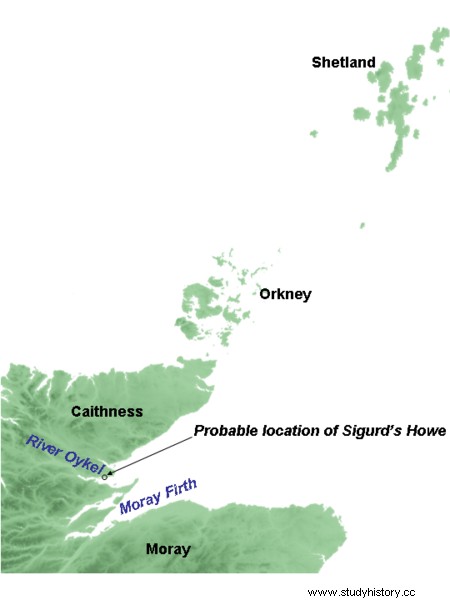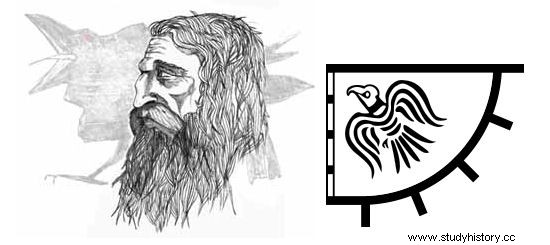During the 9th century, one of the threats that the King of Norway Harald I had to face was were the constant incursions of pirates who plundered the coasts. So, in 875 he led an expedition to punish and conquer his base of operations:Orkney and Shetland Islands, located north of present-day Scotland. The pirates received a harsh punishment and were expelled from the islands. In compensation for the son lost during the battle, Harald granted the rule of the islands and the title of count to Rognvald Eysteinsson . But Rognvald, with the king's consent, relinquished his lands and title in favor of his brother Sigurd Eysteinsson .

Sigurd signed an alliance with Thorstein the Red and expanded his territory by taking Caithness, Argyll, Moray and Ross, in Scotland, for which he earned the nickname the Mighty . In one of the clashes with the Scots, he challenged Máel Brigte , a native leader, to a battle with 40 men on each side. As Sigurd did not trust the Scots, or to ensure victory, he came with 80 men. When Máel realized the deception, he did not back down and harangued his men so that each of them killed the two opponents that corresponded to him. They fought with great strength and bravery, but Sigurd's superior numbers turned the battle in his favor.

As a war trophy, Sigurd beheaded Máel and hung his head from the stirrup of his horse. They set off to celebrate their victory, but the movement of the gallop caused a tooth that protruded from Máel to sink into Sigurd's leg. That wound became infected and Sigurd died shortly after from the infection. It is believed that he was buried near the modern town of Dornoch in Sutherland, Scotland.
Do not trust your enemies… even if they are dead.
Reissue of previously written article.
